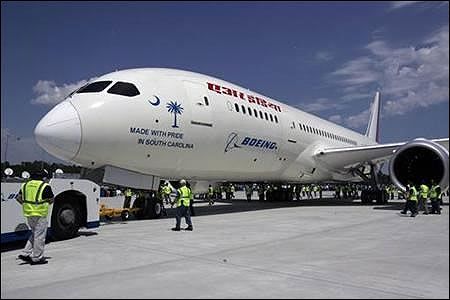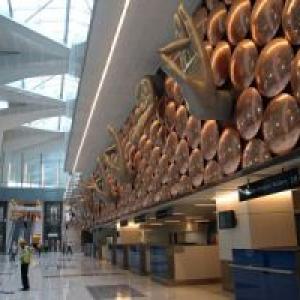 Let Air India fly to newly-found uneconomic destinations as a national service, says Anjuli Bhargava.
Let Air India fly to newly-found uneconomic destinations as a national service, says Anjuli Bhargava.
There's been a lot of interesting and different initiatives from the new government (Swachh Bharat, Make in India, bidding adieu to Planning Commission and so on) but as far as aviation goes, the Narendra Modi government has only made some strange announcements till now - none of which I think will help the ailing airlines in any way.
The United Progressive Alliance-II had more or less decided to scrap what is popularly called the 5/20 rule (Indian scheduled operators can fly overseas only if they fly for five years domestically and have 20 aircraft in their fleet), a rule that can't be justified on any grounds.
No country imposes such restrictions (on its own airlines that too). India, in fact, permits tiny airlines like Mihin Lanka (the president of the country's nickname is Mihin) to fly in and out happily, so this is something that will have to go whether the older, more established Indian airlines like it or not.
But what I was horrified to learn is that in some odd way, the Ministry of Civil Aviation wants to link the removal of this silly rule by imposing some regional connectivity (within India) guidelines on airlines.
In other words, we will let you fly overseas; in turn, you fly within India to some newly-found uneconomic destinations from where, I presume, our Members of Parliament and politicians hail.
As I read the proposed new route dispersal guidelines, I understood and absorbed their full implications. The government wants the carriers to fly to 87-odd "incentive" destinations.
These include Jogbani, Rupsi, Khowai, Raxaul, Lengpui and Keshod, to name a few. Yes, you heard me correctly. These are all apparently places in India that have at least some kind of airstrip, if not an airport.
I admit to being quite ignorant about the geography of my own country but you could be forgiven, too, if you haven't heard of most of these. Now if they had just suggested Jharsuguda, Pasighat, Daporijo, Nanded, Pakyong and Deesa, one may still be able to justify their request...
Moreover, since most of these places don't really have the requisite infrastructure to land a Boeing or Airbus (even the narrow bodies), I think the government is in a way asking all the airlines - including those that run a single fleet operation - to induct a new, smaller aircraft.
So airlines such as IndiGo and GoAir, who have nothing but their Airbus and Boeings, will be forced to induct an entire new fleet of smaller aircraft.
This is the most bizarre request since the low-cost model worldwide is acknowledged to work best when the airline sticks to a single aircraft type in its fleet.
SpiceJet - which until recently was India's second largest private low-cost airline - has brought the Q400s in and anyone who knows anything about it can hold forth for a few hours on the kind of trouble SpiceJet is facing thanks to this decision.
Apart from the fact that airlines in India have mostly been making losses and this will add to their woes (since none of these destinations will prove viable for a while), the guidelines ask airlines that are trying to make a success of the low-cost model to go against their very grain.
Now, coming to the government's objectives that, of course, are noble if not well thought out, I have an idea. If they are so keen to provide connectivity to these rather remote places (and these desires, at least in the past, have often been based on political influence and MP's insistence, rather than a genuine need to enhance connectivity for the country), maybe they should consider doing it through the national carrier Air India.
Let Air India - that anyway flies very limited international routes (often bleeding profusely) and makes huge losses on trunk routes - do this national service. It can do some intelligent sale-and-leaseback deals and exchange its large wide bodies for ATRs or whichever smaller aircraft takes their fancy.
It can get rid of large numbers of its staff, several of whom have little to do, if truth be told. Pilots can be given Voluntary Retirement Scheme packages and take their endless complaints elsewhere.
We - the taxpayers - can pay far less than absurd amounts like Rs 30,000 crore (Rs 300 billion) to subsidise the operations of this much smaller entity than we do for Air India today.
And the government can - instead of abdicating its responsibility as it does with many other things like building airports, roads, educational institutes, the list goes on - for a change actually do its duty to the nation.










